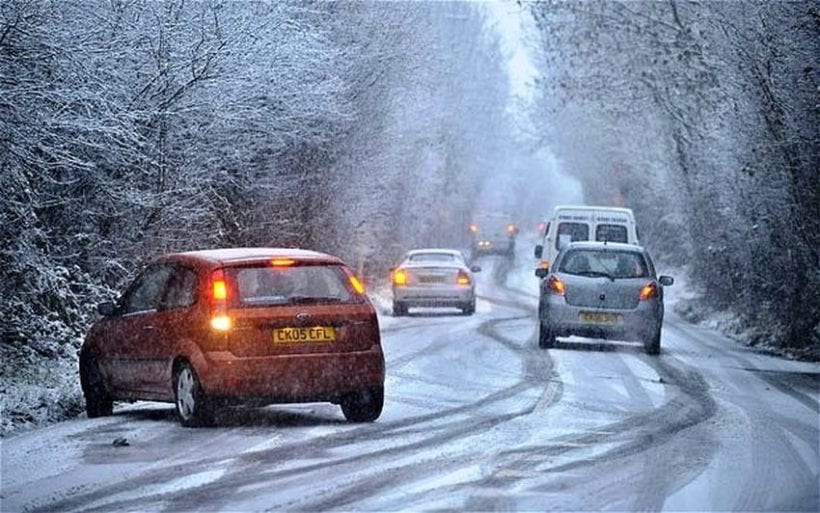Road safety is the collective responsibility of all drivers. While it’s an impossible endeavor to try to eliminate accidents entirely, it’s worth remembering that most car crashes are not only predictable but also preventable.
By understanding some of the leading causes of automobile accidents and making a conscious effort to avoid them, you can do your part in making our roads safer. Let’s look at seven of the leading causes of car accidents, as well as some life-saving tips for preventing them.
1. Drunk Driving

Drunk driving is one of the leading causes of car accidents, and it is the leading cause of fatal car accidents. The SJG Law Firm notes that “the number of accidents caused by impaired drivers continues to be on the rise”.
In theory, the solution is simple. If you drink, don’t drive under any circumstances. Give a friend your keys, have a designated driver ready or call a taxi. Almost any alternative beats driving while intoxicated and putting others’ lives at risk. If you have been injured in an auto accident because someone else was driving under the influence, lowerylaw suggests that you should find car accident lawyers to help you protect your rights.
2. Distracted Driving

You might think you’re perfectly capable of eating a sandwich or writing a note while at the wheel, but the crash statistics show otherwise. In fact, distracted driving claimed the lives of 3,179 people (10% of all fatalities) in 2014, according to the NHSTA.
Lunch can wait. Writing down that phone number can wait. Make sure, whenever you drive, that your vehicle and your surroundings have your full attention.
3. Curves and Turns

We’re all familiar with the kinds of roads that threaten our safety. It’s those deadly hidden turns and sharp curves.
Whenever you’re unsure of where you’re going or where a road leads next, be sure to do the following:
- Be aware of signs that might indicate a turn or curve (i.e. a reduced speed limit, sharp turn signs)
- Reduce your speed. First and foremost, take your foot off the gas, and then use your brakes to slow your vehicle as needed.
- Keep your eyes on the road. The lines on the road should indicate the direction and the angle of the turn or curve. Adjust your speed to your ability to stay within your lane.
4. Speeding

Your average car accident is costly enough. Introduce speeding into the equation and the results are only exacerbated. Next time you’re thinking about flooring it, consider the cost of a speeding ticket, points on your license, and potential lawyer fees you might have to face.
But there are other incentives for controlling your speed. Most major insurance companies are now offering discount programs through devices that monitor and track driving habits. State Farm’s Drive Safe & Save program, for example, allows customers to save an initial 5% on their premiums, and up to 30% after showing excellent driving habits.
5. Teenage Drivers

If you have children between the ages of 16-19, you can have a positive impact on their driving habits and road safety by enrolling them in one of your state’s drivers education programs.
A study performed by the University of Nebraska showed that students who completed a drivers education course were involved in significantly fewer accidents and violations than drivers who did not enroll in a course.
6. Snow

Does the mere sight of snow conjure thoughts of fishtailing up a hill or swerving into a guardrail? If you live in a state that sees frigid winters, you likely have an idea of just how deadly driving in the snow has the potential to be.
If you have yet to take steps to protect against an accident in the snowy conditions, there are a few things you should consider:
- Don’t drive! The easiest way to prevent a car accident when it’s snowing is to not drive at all. Don’t let the pressure of work, school, and schedules cause you to put your life at risk. Employers and schools don’t want you risking your life either.
- Get an all-wheel drive vehicle. If you live in a state that gets a generous helping of snow each winter, seriously consider trading your sedan in for an AWD vehicle.
- Put winter tires on your car. Some tire experts claim that the traction of all-season tires is roughly equivalent to that of half-worn winter tires.
7. Poor Eyesight

Driving without your prescription lenses can have a negative impact on your awareness while driving. Road signs exist to keep all drivers safe, and not being able to read signs until the very last moment can quickly create havoc on the road.
If you have anything less than 20/20 vision, be sure to keep your prescription updated annually, and don’t attempt to drive without wearing your corrective lenses.
Road safety starts with you. Make sure your driving habits and surrounding traffic have your full attention whenever you get behind the wheel.
Unfortunately, no matter how safe you are behind the wheel, nothing can completely prevent a car accident from occurring. If you do experience an accident, having an experienced lawyer in your corner is so important. Serious Injury Law Group will be there to support you and ensure you get the compensation you deserve.




